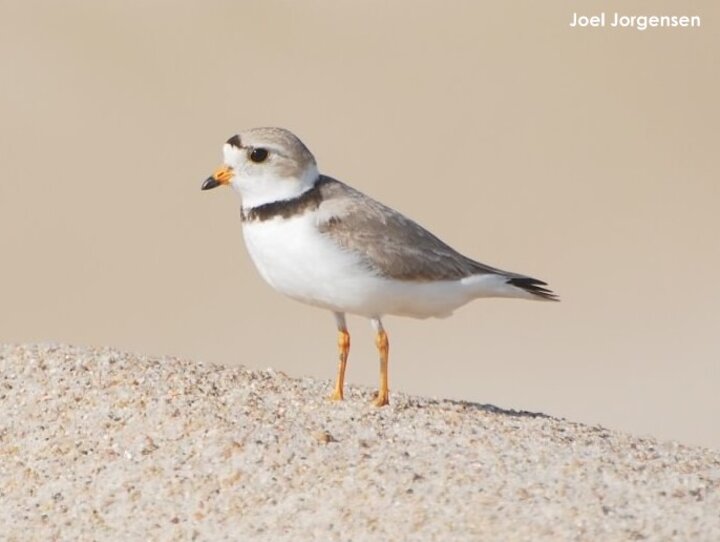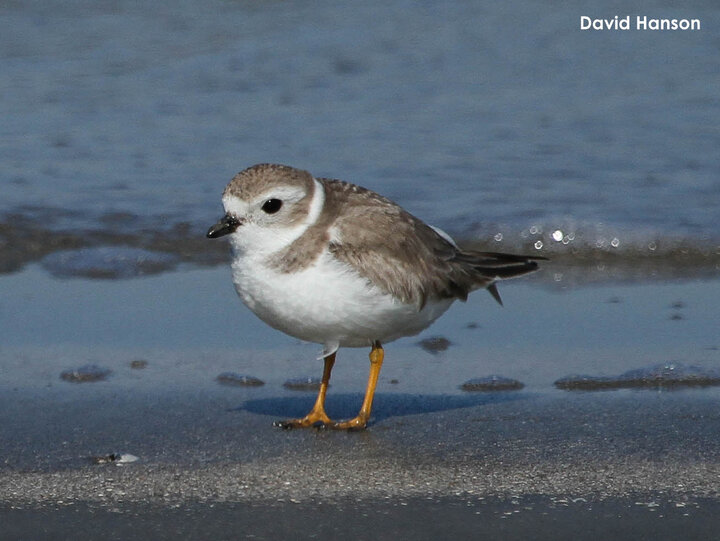The Piping Plover is a state and federally threatened species. It gained protection under the federal Endangered Species Act in 1986. It is a small and stocky migratory shorebird that was named for the melodic "piping" of its' call. Piping Plovers are found in open sandy habitats such as river sandbars and sandy beaches. They feed on insects and small aquatic invertebrates and are often observed running rapidly along shorelines in search of prey.
Piping Plovers are:
- About the size of a House Sparrow
- 6.5 inches long from beak to tail
- 15 inch wingspan from wing tip to wing tip
Appearance
Breeding Adult
white undersides
sand colored wings and back
single black breast band
black forehead patch
orange legs
orange bill with black tip

Winter & Age
Winter Adult
lack black breast band
lack black forehead patch
pale orange legs
all black bill
Juvenile (1 years old)
closely resembles winter adult
mottled gray-white body
lack breast band and forehead patch
pale orange legs
all black bill
